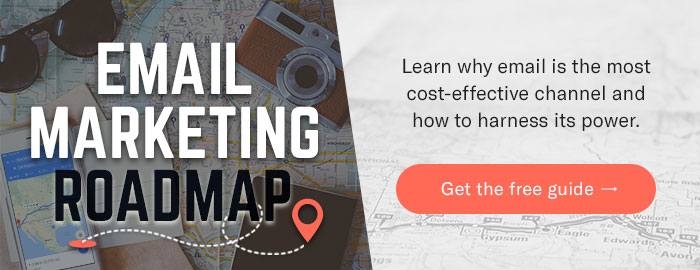You know you need to send out regular communications to your clients so you’ll stay top of mind with them, and you’ve decided it’s time. You’re going to start sending out a regular email newsletter. Then, you’ll post the same content on your website and share it with your network through social media. If you’re ready to do the work, here are a few tips to get you started.
1. Create an editorial calendar:
A little planning will save you headaches down the road. It’s better to have a plan and adjust when something comes up instead of worrying about what you’re going to write each time you need to send something out. You should also decide your sending frequency. Are you going to send your newsletter weekly, every other week? Let your audience know what to expect.
2. Speaking of audience…have one:
Know who you’re talking to. If you’re communicating with past clients, then chances are you know the kinds of topics and information they’re likely to be interested in.
3. Know why you’re communicating:
Before you start writing, understand what your audience needs, and then tailor your message to meet those needs. It’s tempting to focus on only your own goals, but if you do that, your audience will tune out. You need to think about your communications from their perspective. At OutboundEngine, our strategy is helping people, not selling to them. So real estate agents might share information about home maintenance, decorating and how to choose the right contractor, while a loan officer might share information about how to save money on big purchases, how to use home equity loans or things you may want to think about before you rent out your property.
4. Outline before you write:
Having a blueprint before you start helps you write efficiently, especially if you’re pressed for time. If you start writing and go in an interesting direction, don’t worry. If it makes sense with your overall direction, it’s okay to explore an idea that pops up when writing—that’s how creativity works sometimes. (It doesn’t always follow the outline.) Just make sure you don’t veer too far off course from your original idea.
5. Write:
If writing intimidates you, try the pomodoro technique. Shut off your email. Do not browse the Internet. Put away your phone. Grab your outline, set a timer for 25 minutes, and just write. Don’t worry about editing; don’t worry about making everything perfect. (That comes later.) For now, just get your ideas down, and do it in a focused way. Don’t get distracted by email notifications or your phone chiming. After 25 minutes, take a five-minute break. Repeat this process as long as it takes for you to finish your first draft. Hopefully it will take only one or two pomodoro sessions, but if it takes up to four, then take a 15-minute break after the fourth.
BONUS CONTENT: Our Email Marketing Roadmap will help guide you to email marketing greatness. Get Yours Now
6. Set it aside:
It’s very difficult to catch your own errors, so a little time away from the first draft will make it easier for you to spot your typos. Try to build this into your editorial calendar. Have one day for drafting, a day where you take a break from the newsletter, then come back to the draft on the third day to reread your work. If you don’t have this much time, try to write in the morning, do other things, and then read your first draft again after lunch.
7. Read once for flow:
Do your ideas make sense? Do they flow naturally into each other? Do you have a solid intro and conclusion? This is a good time to look at your email subject line to make sure it still fits in with the body of your content.
8. Read once for line edits:
- Look for misspelled words.
- Make sure you know the difference between its/it’s and their/they’re/there and look for other common errors.
- Try to eliminate “be” verbs, which can make your writing passive. For instance, instead of, “We will be walking to lunch,” write, “We will walk to lunch at 12:30.”
- After you’ve corrected all the errors you see, run spell check.
9. The final read:
Before you hit send, have someone else read your work. Ask them to tell you if anything is confusing. If you work on your own, read your writing aloud to yourself. You may hear awkward sentences that your eye skimmed over or notice where you got off topic.
10. Pick a great image:
Whether you’re creating an email or a post on social media to publicize your writing, people engage more with content that uses images.
11. Post and then share:
You’ve put a lot of hard work into your campaign, so make sure people know about it! Post to your social networks. Consider publishing it to your website as well if you have a blog.
12. Measure:
Start keeping track of emails that are read and shared the most. Analyze what these pieces of content have in common, and try to figure out ways to give your audience more of the information they want. Experiment with sending times and see which work the best for you.
13. Rinse and repeat!
This is where your calendar comes in handy. It will help you stay on track. You will come across new ideas, so make sure you add them to your editorial calendar.
You know your business, so chances are you won’t have a hard time coming up with ideas. The challenge comes from maintaining a regular email schedule and creating good, consistent writing.



![Better Email Etiquette Equals Better Marketing Results [16 Rules]](https://www.outboundengine.com/wp-content/uploads/shutterstock_411184843-1-400x250.jpg)

